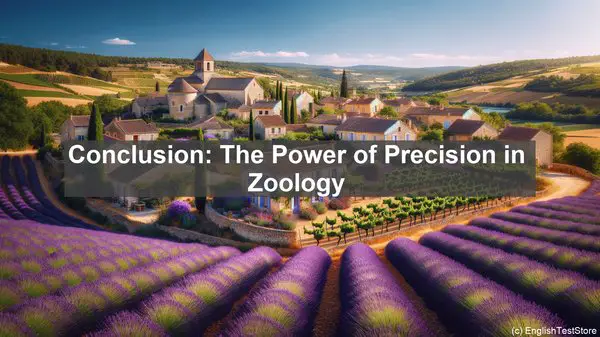Introduction: The Importance of Accurate Terminology
Welcome to our lesson on the top 10 commonly confused words in zoology research. As students and researchers, we often encounter terms that sound similar but have distinct meanings. Misusing these words can lead to misunderstandings and inaccuracies in our work. So, let’s dive in and clarify these concepts!
1. Species vs. Specimen
One of the fundamental distinctions in zoology is between ‘species’ and ‘specimen.’ While ‘species’ refers to a group of organisms with shared characteristics, ‘specimen’ is an individual or a sample from that group. It’s crucial to correctly identify the species of a specimen to ensure accurate data analysis and classification.
2. Habitat vs. Niche
The terms ‘habitat’ and ‘niche’ are often used interchangeably, but they have different meanings. ‘Habitat’ refers to the physical environment where an organism lives, while ‘niche’ encompasses not just the habitat but also the organism’s role, interactions, and resources within that environment. Understanding an organism’s niche is vital for studying its ecological relationships.
3. Endangered vs. Threatened
When discussing the conservation status of a species, it’s important to differentiate between ‘endangered’ and ‘threatened.’ ‘Endangered’ species face a very high risk of extinction, while ‘threatened’ species have a lower but still significant risk. These classifications help prioritize conservation efforts and allocate resources accordingly.

4. Invasive vs. Native
In the context of species, ‘invasive’ and ‘native’ are contrasting terms. ‘Invasive’ species are non-native organisms that have been introduced to an ecosystem, often causing harm to the native species and their habitats. ‘Native’ species, on the other hand, are naturally occurring and have adapted to the local environment over time.

5. Prey vs. Predator
Understanding the dynamics of predator-prey relationships is crucial in zoology. ‘Prey’ refers to the organism that is hunted and consumed by another organism, known as the ‘predator.’ These interactions play a significant role in shaping ecosystems and maintaining the balance of populations within them.
6. Ectotherm vs. Endotherm
When it comes to an organism’s regulation of body temperature, the terms ‘ectotherm’ and ‘endotherm’ are used. ‘Ectotherms’ rely on external sources, such as the sun, to regulate their body temperature, while ‘endotherms’ generate heat internally. This distinction has implications for an organism’s metabolic rate and activity patterns.
7. Taxonomy vs. Systematics
While related, ‘taxonomy’ and ‘systematics’ have distinct focuses. ‘Taxonomy’ involves the classification, naming, and categorization of organisms, while ‘systematics’ delves deeper into the evolutionary relationships and genetic connections between different species. Both fields are essential for understanding biodiversity.
8. Morphology vs. Anatomy
In the study of an organism’s structure, ‘morphology’ and ‘anatomy’ are often used. ‘Morphology’ encompasses the overall form and external features, while ‘anatomy’ delves into the internal structures and organs. Combining both approaches provides a comprehensive understanding of an organism’s physical characteristics.
9. Altruism vs. Cooperation
When it comes to social behavior in animals, ‘altruism’ and ‘cooperation’ are key concepts. ‘Altruism’ refers to behavior that benefits others at a cost to oneself, while ‘cooperation’ involves individuals working together for mutual benefit. These behaviors have evolved in various species and contribute to their survival strategies.
10. Autotroph vs. Heterotroph
The terms ‘autotroph’ and ‘heterotroph’ describe an organism’s source of energy. ‘Autotrophs’ can produce their own energy through processes like photosynthesis, while ‘heterotrophs’ rely on consuming other organisms for energy. This division is fundamental in understanding the flow of energy within ecosystems.
